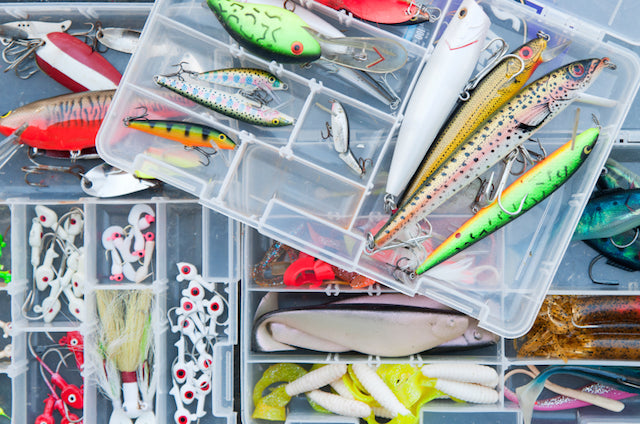Crankbait vs. Swimbait

Fee-fi-fo-fish, what have you got in your tackle kit? You’re a giant water lover fond of reeling sufficient disambiguation and in search of lure clarification as it pertains to crankbait versus swimbait. The waters are very giving -- as is knowledge and the distinct benefits between the two lures.
The attraction of crankbaits is both physical and dimensional. They are hard bodied, they vary in shapes and sizes and all have a visual lip or bill on the front; a design that allows the lure to get down into the water column. The size of the bill determines the diving depth of the lure. Bigger and longer bills equates to a deeper in dive. They also have two hooks – one on the bottom and the rear.
Crankbait is good to use in tough conditions when you know the bite may be a little off. They also tend to swim in a straight line, which can be an alert to prey that there’s something faux amiss in the waters. You want to work your crank bait to mimic the swimming movements of live bait. Think erratic in swimming motion and adjust. Crankbaits can be effective just about anywhere there are bass: ledges, steep banks, shallow flats, near grass beds, brush and stumps. They are great to use year round and in a variety of situations. This lure is of the most versatile lures in the tackle kit.
The attraction to swim bait is its shape, the external and internal rigging, the likeness of bait colors and the paddle tail that enables it to swim like a fish and in less of a straight line. They are manufactured with a soft body and they have no bill. Swimbait lures are designed with a seamed break in the center (and sometimes at the tail) allowing it to mimic the actions of live bait. The trick is to retrieve it in a steady and slow fashion to increase your hook up ratio. Bass love treading bait and this lure treads easy.
There are two main swimbait styles at current and they are wedge style tailed and boot tailed. Wedge will yield a more balanced tail design, allowing the bait to swim in a S-motion. The size and width of the bait will determine how much action it gives. A wedge is good in low-light conditions as well as stained and dirty water conditions. The design allows for the water vibrations to be plentiful which a fish will feel through its lateral line system and give it the ability to hunt that swimbait.

The boot tail designed swimbait is one of the oldest designs. Grandfathered in because of its durability, it is an unbalanced design that gives this swimbait more of a rocking motion than the wedges S-motion. Also depending on the size of the tail it could yield our lure an uplifted rear. The lift is what creates the unbalanced rocking motion that prey also find attractive.
It’s the design details between the crankbait and swimbait that makes them differ. Opting to use either one will make all of the difference in the water and assist you in yielding fish to the boat. Good fishing.
- John Harley